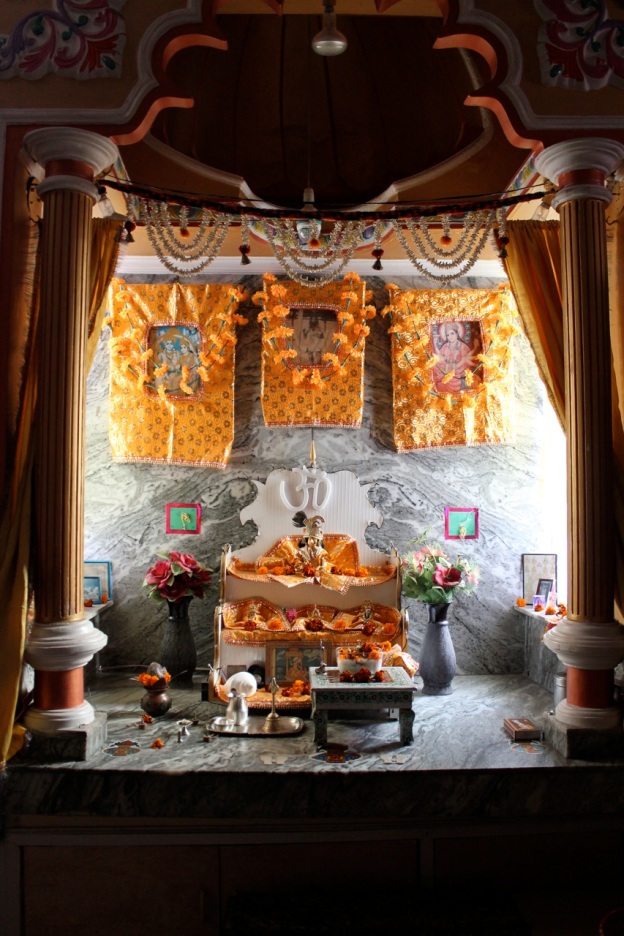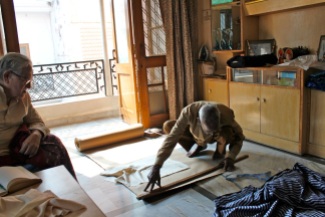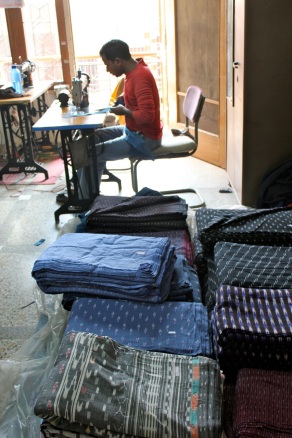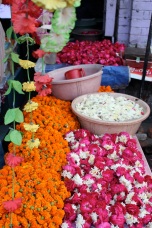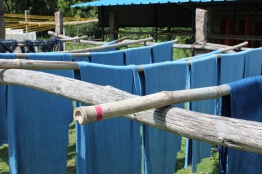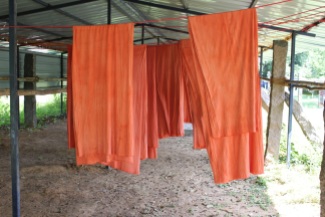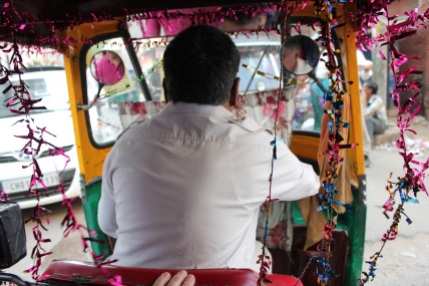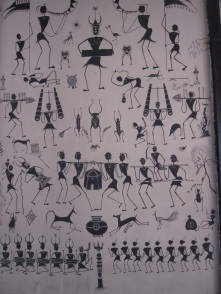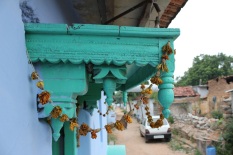I’m still working on the a new website for Denny Andrews. The photographs of the new seasons garments and shawls remind me of last years buying trip to India.
Always an adventure, I love traveling on Indian railways. Long train journeys, often overnight in two tier second class air conditioned. You are provided with a paper bag containing sheets, pillowcase and towel to make your bed. Meals are brought to you and in between there are always chai wallahs and snacks being sold. Families bundle themselves into small spaces and the carriages burst with people and luggage. The Indians have the capacity to sleep on a shelf in a sari, stay amazingly still and leave the train in the morning looking serene and composed. I on the other hand toss and turn, get tied up in the sheets, look crumpled and baggy eyed and emerge from my cocoon looking, well, less than serene. Still, I believe it is the best way to travel to experience the luxury of hours spent reading and looking out of windows at vast landscapes and the extremities of life.

seeing us off

Our Train

Our Carriage

Living on the edge
After a couple of days in Delhi our first adventure was a 27 hour train journey west to Bhuj, Kutch a part of Gujarat. The purpose of this trip was to visit the Ajrak printers in Dhamadka and the weavers of Bhujodi. Gujarat has an amazing textile tradition, renowned for its printing, weaving and intricate embroidery.
The Khatri family are generations of master printers and dyers and represent the longest and finest of printing traditions in the world. As we are shown around advice and knowledge are generously shared as I take pictures and ask numerous questions about process. Though they have been supplying Denny with wonderful block prints for years some things have changed. Synthetic indigo has taken the place of natural indigo fermentation vats and alizarin for madder. Other vegetable dyes such as pomegranate, turmeric and even rhubarb are still evident. Myrobalan is still used for it’s tannins to mordant cotton, which with iron rust gives black. Traditional and complex methods of mordent and resist printing continue, with pastes made from lime and tree gum, tamarind and alum. Though things are changing business is thriving. There are concerns, however, about ground water quality and levels since the earthquake in 2001 which devastated the region. Lack of water does remain a threat to traditional dyeing practices all over India.
Back in the village we are shown new bedspreads designs, printed and dyed with rhubarb and indigo on organic cotton grown in Gujarat. Hand printed fabrics in indigo, Indian red and Kasis (iron and tannin) are chosen for suits, dresses and shirts. They show us printing on both organic and non organic cotton and explain how the organic cotton seems to improve the take up of dyes and intensify the colours. After a very informative and productive day and a lunch of chciken, goat and vegetable curries with rotis seated on the floor of the office we leave with our bundle of sample fabrics and cotton stoles.

Three generations of Khatris

ajrak blocks

Printing

mordant paste curing

indigo vat

indigo landscape

Dhobi wallah

wringing

drying

indigo cloth ready for folding

waiting driver

non organic cotton compared with organic

organic cotton bedspread dyed with rhubarb and indigo

looking at prints

bundle of samples
The next day a drive to Bhujodi to visit master weavers and choose shawls and stoles. We are shown yarn dyed this time in indigo fermentation vats in the ground . They are kept to an even temperature by burying the vats in goat dung which keep them cool in the summer and warm in the winter.
The master weaver noticed a shawl that Denny was wearing. One which she bought in 1996. He recognized it as his work and so a wonderful reunion took place followed by a celebration meal seated on the floor of his home. Wonderful hospitality in such a beautiful place.

The master dyer

The master weaver and brother shows me the indigo vats

healthy indigo vat in goat dung

indigo dyed yarn

weaving shed
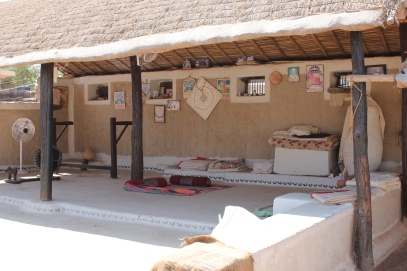
a shady haven

lunch

Sacred calf

Denny’s shawl is reunited with it’s maker
A visit to the legendary, Mr Wazir, who shows his amazing collection of textiles to those who share his passion and might help him with his dream of opening a museum.
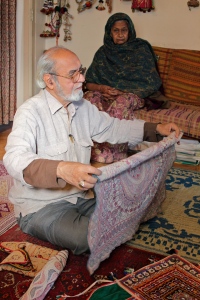
Mr Wazir
Next day we head off on the 12. 25 for the next18 hour train journey of books, twisted sheets, calls of the chai wallahs walking the corridors and food sellers calling “ommelit, cutlit “. In the morning the Pink city awaits.
